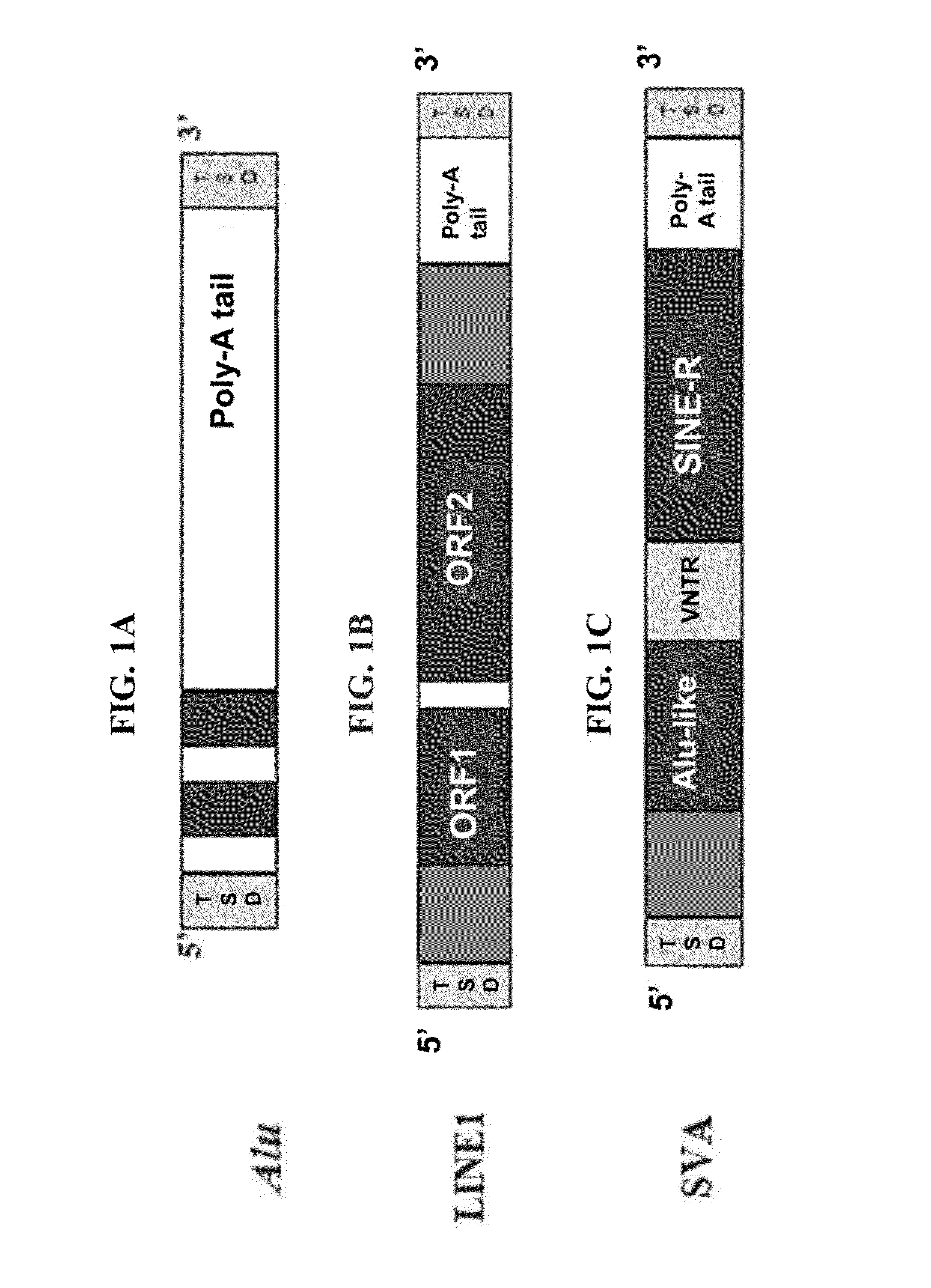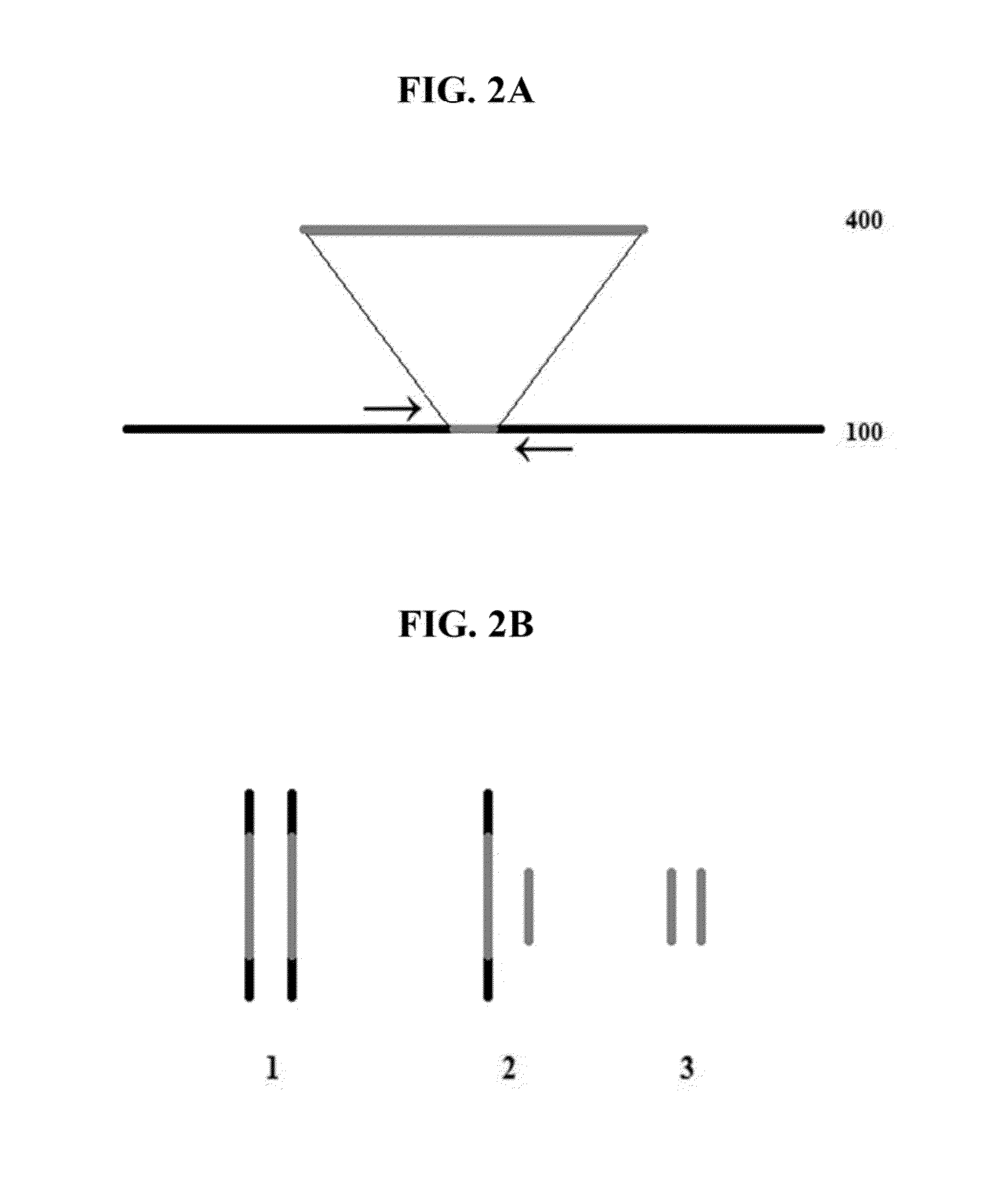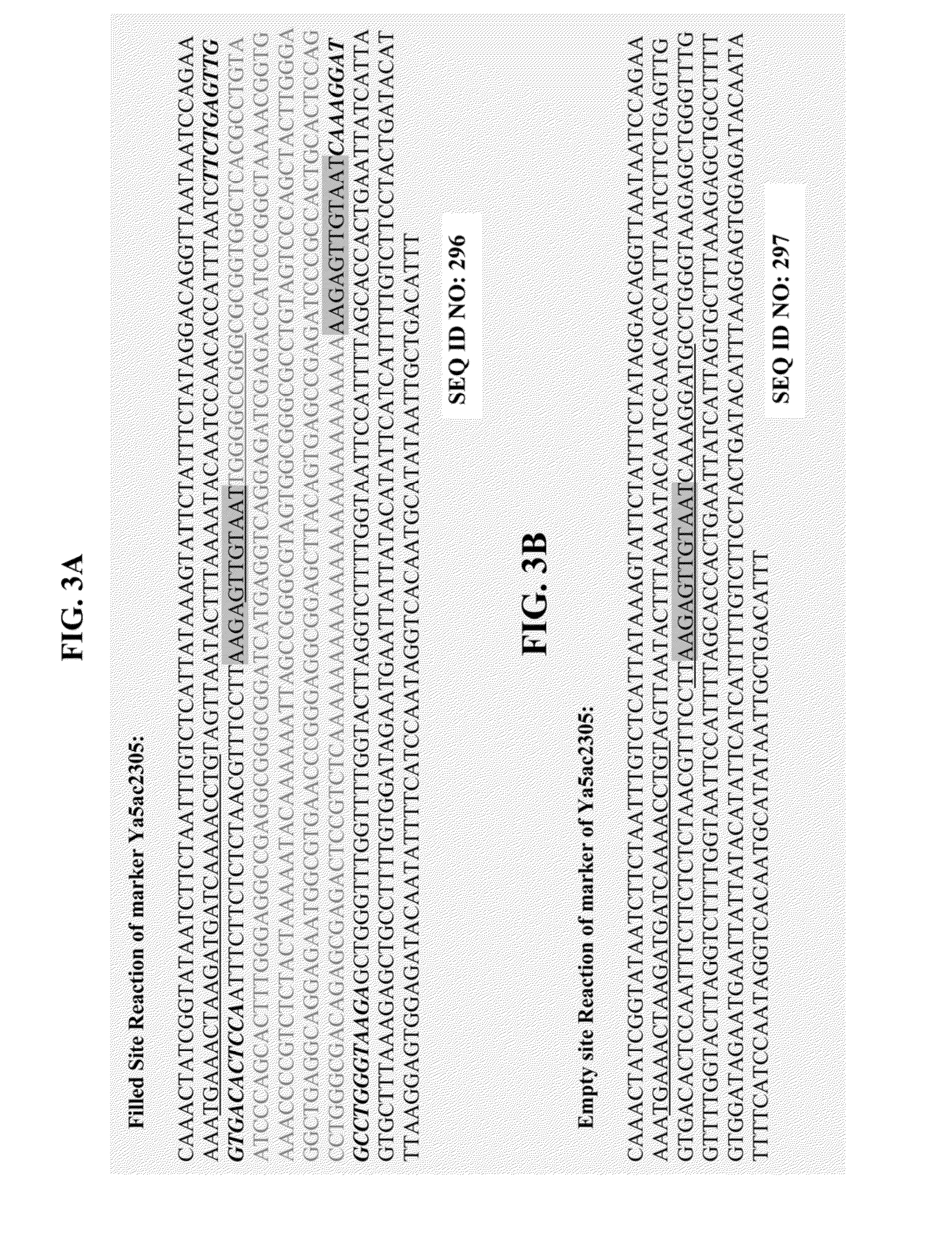Method for genetic detection using interspersed genetic elements: a multiplexed DNA analysis system
a genetic element and interspersed technology, applied in the field of human identification and bioancestry testing, can solve the problems of forensic samples often being compromised in quality and quantity, affecting amplification efficiency, and stuttering artifacts, and achieve the effect of facilitating the production of small pcr products
- Summary
- Abstract
- Description
- Claims
- Application Information
AI Technical Summary
Benefits of technology
Problems solved by technology
Method used
Image
Examples
example 1
A Four Dye Multiplex System for Forensic Applications
[0124]A number of markers were selected for multiplexing for a forensically useful kit. The forward primers for each marker were labeled with one of four fluorophores, 6-carboxyfluorescein (6-FAM™), 4,5-dichloro-dimethoxy-fluorescein (JOE™), carboxytetramethylrhodamine (TAMRA™), or 5-carboxy-X-rhodamine (ROX™) and a fifth fluorophore in the orange wavelength as the size standard). The selected markers' amplicons range in size between approximately 56 and 125 bp, and individual INNUL alleles differ in amplicon size between 3 and 10 bps. The gender marker Amelogenin was also added to the multiplex. Multiplex optimization experiments addressing primer concentration and peak heights were performed.
[0125]Markers were selected from http: / / dbRIP.org, existing literature, and through BLAST sequence analysis (A. F. A. Smit, et al.; Batzer, M. A., et al. (2002); Batzer, M. A., et al. (1994); Feng, Q., et al.; Houck, C. M., et al.; Kazazian,...
example 2
Primer Design
[0128]Primers were designed using Primer3 (Untergrasser A., et al., “Primer3—New Capabilities and Interfaces,” Nucleic Acids Research 40(15): e115 (2012); Koressaar T., et al., “Enhancements and Modifications of Primer Design Program Primer3,” Bioinformatics 22(10): 1289-91 (2007); input version 0.4.0; http: / / frodo.wi.mit.edu / primer3 / ). A set of three primers was designed for each marker: one forward primer and two reverse primers, one for the insertion and one for the null allele. All of the designed primers have Tm values in the range of 58°-63° C. The program “Reverse Complement” from the Harvard Medical Technology Group and Lipper Center for Computational Genomics was used (arep.med.harvard.edu / labgc / adnan / projects / Utilities / revcomp.html). Subsequently, the primers were screened against the GenBank non-redundant database (National Center for Biotechnology Information, U.S. National Library of Medicine, National Institutes of Health) to determine whether they were un...
example 3
Primer Preparation
[0129]The fluorescently labeled and unlabeled oligonucleotide primers were synthesized by Eurofins MWG Operon (Huntsville, Ala., USA) or Integrated DNA Technologies (Skokie, Ill.). All lyophilized primers (labeled and unlabeled) were dissolved in 10 mM TE (tris(hydroxymethyl)aminomethane (“Tris”) and ethylenediamine tetraacetic acid (“EDTA”)) Buffer (pH 8.0) to a 100 μM stock concentration (10×), The stock primers were stored at 4° C. until used. Following reconstitution, each primer was diluted using TE Buffer to a final concentration of 10 μM (1×). Each primer mix consisted of three primers: one labeled forward primer and two corresponding unlabeled reverse primers. The combined volume of the two reverse primers was equivalent to the volume of the forward primer. All labeled primers were stored in opaque polypropylene tubes to avoid quenching of the fluorescent tags.
PUM
| Property | Measurement | Unit |
|---|---|---|
| Temperature | aaaaa | aaaaa |
| Mass | aaaaa | aaaaa |
| Power | aaaaa | aaaaa |
Abstract
Description
Claims
Application Information
 Login to View More
Login to View More - R&D
- Intellectual Property
- Life Sciences
- Materials
- Tech Scout
- Unparalleled Data Quality
- Higher Quality Content
- 60% Fewer Hallucinations
Browse by: Latest US Patents, China's latest patents, Technical Efficacy Thesaurus, Application Domain, Technology Topic, Popular Technical Reports.
© 2025 PatSnap. All rights reserved.Legal|Privacy policy|Modern Slavery Act Transparency Statement|Sitemap|About US| Contact US: help@patsnap.com



